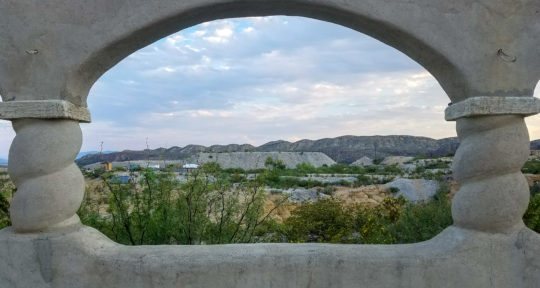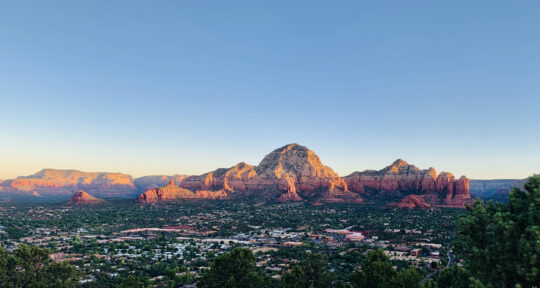From the Grand Canyon in the north to the majestic saguaros of the south (with the Petrified Forest and Painted Desert in between), Arizona has more than its fair share of natural wonders. The sixth-largest state in the U.S. features thousands of years of geological and cultural history packed into more than 100,000 square miles. Dozens of state and national parks are dedicated to helping protect, preserve, and showcase the Copper State’s unique features, including desert landscapes, ponderosa-pine forests, caverns, canyons, and an 80-foot-long slippery red rock sandstone chute known as “the ultimate water slide.”
With the mission of promoting “sustainable tourism practices across Arizona’s spectacular landscapes and unique destinations,” the Arizona Office of Tourism and Leave No Trace Center for Outdoor Ethics welcome visitors to enjoy the state’s scenic views and wildlife, while emphasizing The Seven Principles of Leave No Trace. Remember to plan ahead, stick to trails, take nothing from the parks but your own trash, practice fire and wildlife safety, and respect the region’s inhabitants, Indigenous history, and other visitors.
Whether you’re traveling north or south—and are interested in biking, birding, or bats—here are 10 parks that make it very easy to appreciate Arizona.
Northern Arizona
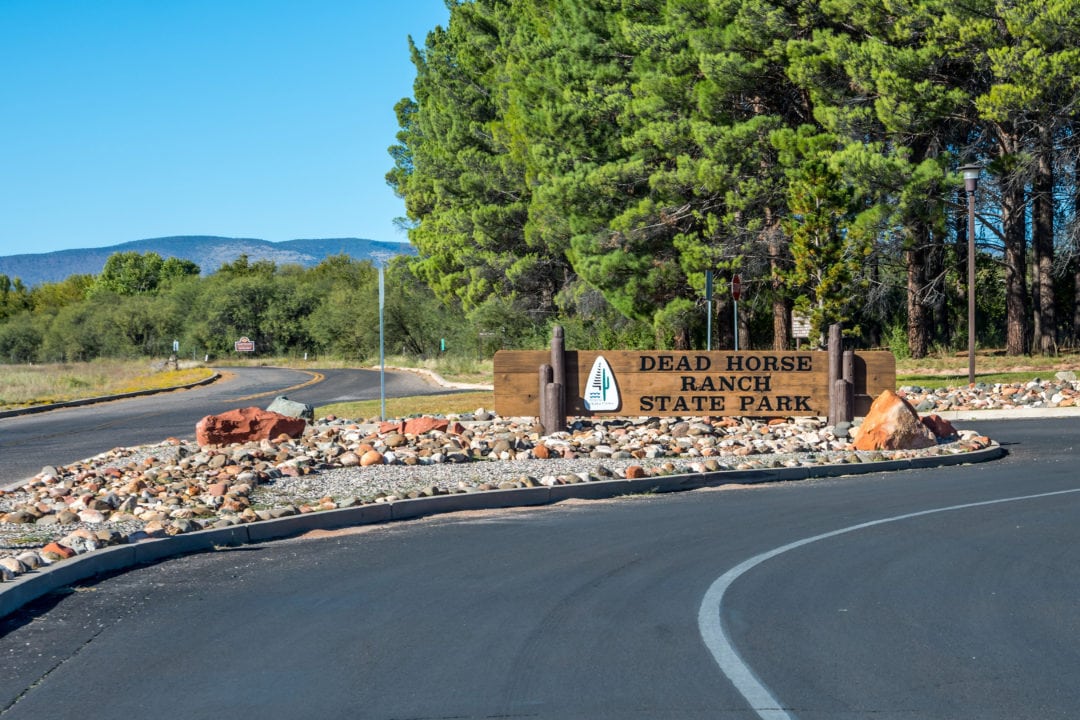
Dead Horse Ranch State Park
Located near Phoenix and Flagstaff, Dead Horse Ranch State Park is a great place to stay while exploring nearby attractions such as Jerome State Historic Park, Montezuma Castle and Well National Monuments, Oak Creek Canyon, Coconino National Forest, and more. Offering RV and tent camping as well as small rustic log cabins, the park got its unique name in the 1940s: When the Ireys family came to Arizona looking for a ranch, one of the properties they scoped out was located near a dead horse—when asked which ranch they preferred, the Ireys kids said, “The one with the dead horse,” and the name stuck. Acquired by Arizona State Parks in 1973, the 423-acre park is great for hiking, fishing, horseback riding, and spotting wildlife such as river otters, foxes, quail, and California kingsnakes (don’t worry, they’re not poisonous—and they eat rattlesnakes).
Red Rock State Park
Red Rock State Park, located just outside of Sedona, is a day-use park featuring trails for hikers and bikers. One of the most beautiful parks in the country, Red Rock offers stunning canyon views that are similar to what you’d expect from a national park—without the crowds. The 286-acre nature preserve hosts weddings and school and private groups, serving as an environmental education center with a visitor center, classroom, and theater. Oak Creek winds through the geologically unique park, creating a habitat for coyotes, mule deer, and several species of native and migratory birds. The gorgeous scenery, including a sandstone canyon and those eponymous red rocks, was featured in several Western movies in the 1950s and ‘60s.
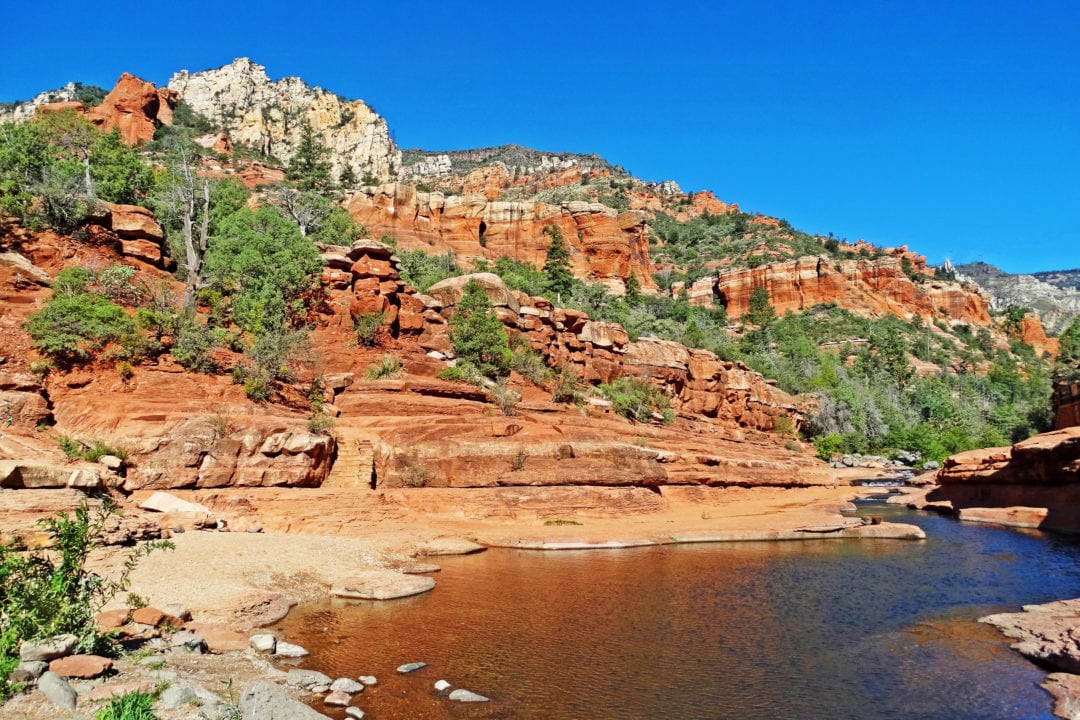
Slide Rock State Park
Named one of “America’s Top 10 Swimming Holes” by the Travel Channel, the park’s Slide Rock is an 80-foot-long chute carved into sandstone; slippery algae has helped turn the red rocks into a natural water slide. This is a popular spot, so get there early and if you intend on taking a dip, don’t forget the sunscreen, water shoes, and a towel. Oak Creek is also a good place for trout fishing, and the park is home to black bears, whitetail deer, and javelina. Opened to the public as a park in 1987, Slide Rock was once the site of the Pendley Homestead, a 43-acre apple farm acquired in 1910 under the Homestead Act. A road built in 1914 (and paved in 1938) opened up the area for recreational purposes, and the park offers several short hiking trails. Slide Rock is also a great fall destination, with quiet picnic areas to enjoy the colorful foliage.
Jerome State Historic Park
The centerpiece of Jerome State Historic Park is the Douglas Mansion Museum. Designed and built by Jimmy Douglas in the early 1900s, the former home and hotel sits on a hill above Douglas’ Little Daisy Mine. The largest adobe structure in Arizona was constructed with bricks made onsite, and, according to the park’s website, “featured a wine cellar, billiard room, marble shower, steam heat, and, much ahead of its time, a central vacuum system.” Today, the mansion is open as a museum housing exhibits of photographs and artifacts detailing the history of the mining town and the Douglas family. Nearby, Audrey Shaft Headframe Park offers visitors a chance to stand on glass and look down into a 1,900-foot mine shaft. Built in 1918, and deeper than the Empire State Building is tall, the shaft is “the largest wooden headframe still standing in Arizona.”
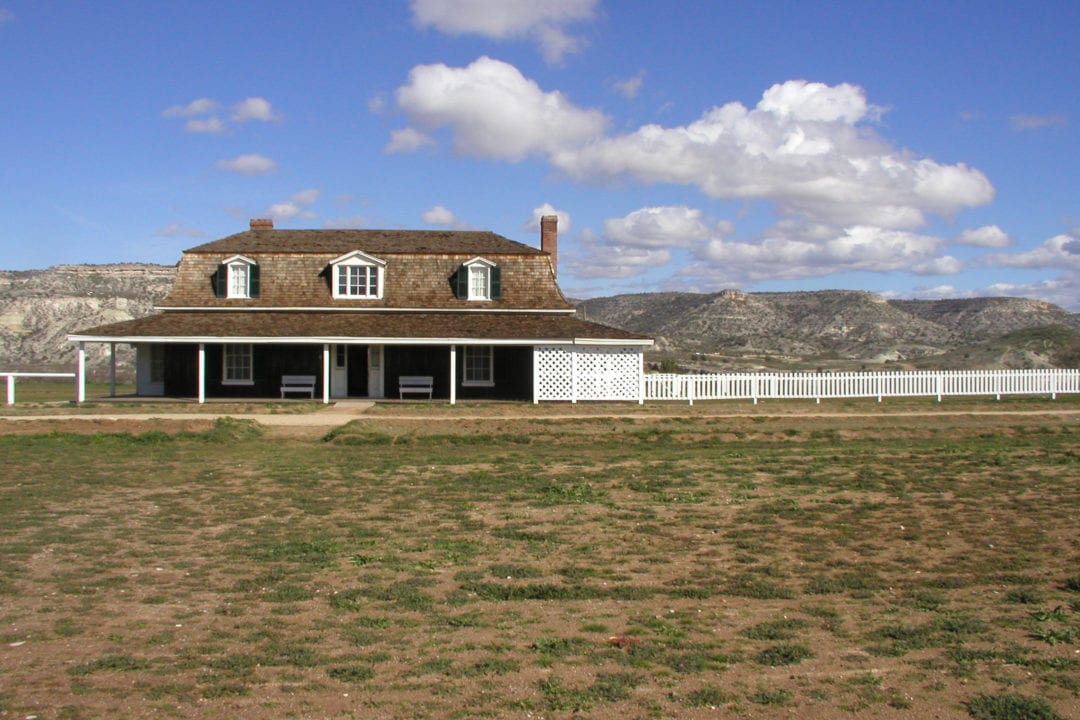
Fort Verde State Historic Park
Step back in time to the late 1800s, when Fort Verde State Historical Park was established as a base for U.S. General Crook and his army. Now “the best-preserved example of an Indian Wars period fort in Arizona,” the park was placed on the National Register of Historic Places in the 1970s. Several original buildings still stand, including an administration building and the commanding officer and doctor’s quarters. In addition to three museums, the ADA-accessible park, located on 11.5 acres in Camp Verde, offers scenic cliff views, gardens, living history demonstrations, picnic tables, and RV and tour bus parking.
Southern AZ
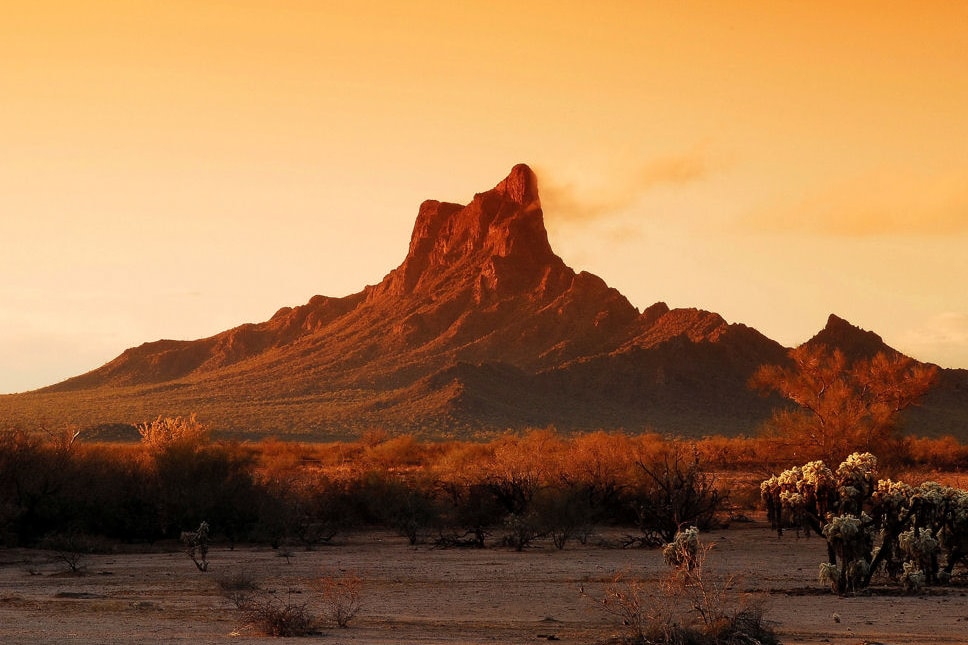
Picacho Peak State Park
Picacho Peak State Park is named for its 1,500-foot spire visible from downtown Tucson (45 miles away) and Interstate 10. Used as a distinctive landmark by travelers for centuries, Indigenous peoples built irrigation canals, ball courts, and agricultural settlements in the area, which is also home to desert cottontail rabbits, mule deer, and badgers. Today, the park has a visitor center with exhibits detailing the region’s history, picnic spots, and a campground. With 85 electric sites for tent and RV camping, Picacho Peak State Park is a great place to stay while exploring nearby Rooster Cogburn Ostrich Ranch, Saguaro National Park, Biosphere 2, and more. But don’t forget that you’re still very much in the desert: Bring plenty of water and be mindful of the heat.
Catalina State Park
Located in Oro Valley, at the base of the Santa Catalina Mountains, this nearly 5,500-acre park is home to thousands of saguaro cacti, other desert plants, canyons, and streams. Designated an Important Birding Area (IBA) by the Audubon Society, the park is home to more than 150 species of birds and several nature trails varying in length and difficulty. Catalina State Park is a convenient place to stay near Tucson, offering 120 electric and water sites for RV and tent camping (each with picnic tables and grills, and access to flush restrooms and hot showers). One of the most visited parks in Arizona, Catalina is known for its stunning views and clean showers—but campers are advised to be on the lookout for camel spiders; although they’re harmless to humans, the scary-looking arachnids like to lurk in bathrooms and scare unsuspecting visitors.
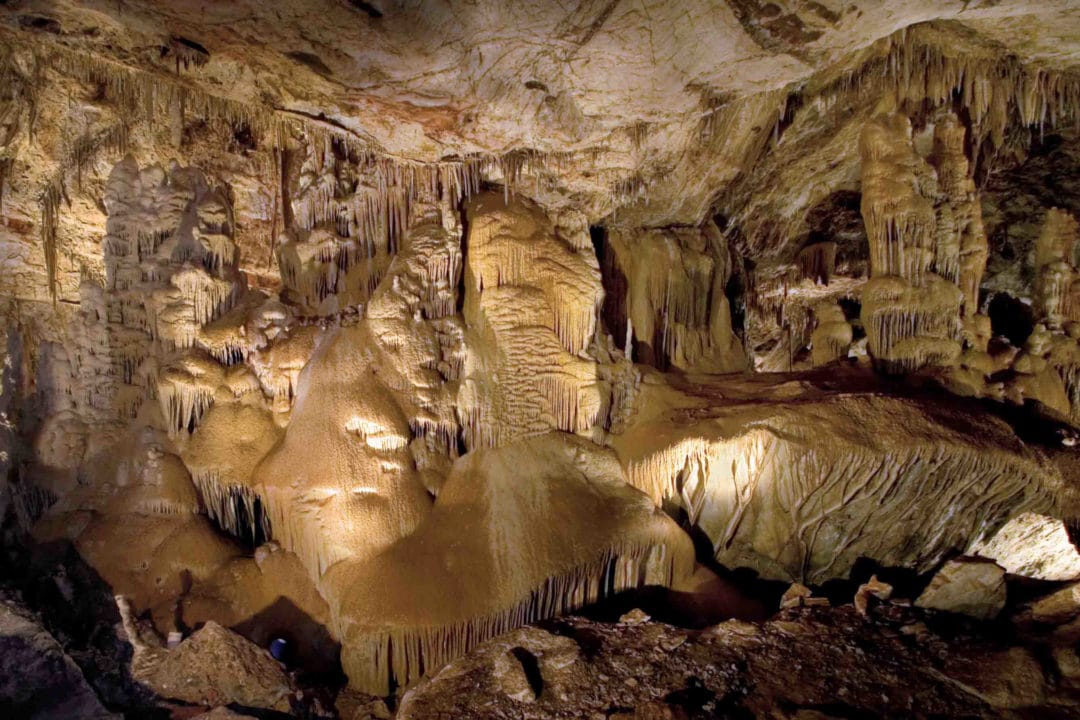
Kartchner Caverns State Park
The centerpiece of Kartchner Caverns State Park is a publicly-accessible limestone cave with 2.4 miles of accessible passages. According to the park’s website, “The trail system inside Kartchner Caverns is one of only a select few that was developed specifically for people with limited mobility with their ultimate experience at the forefront of our minds.”
The cave is home to a 21-foot-long soda straw stalactite (one of the world’s longest) and the tallest column in Arizona (the 58-foot-tall “Kubla Khan”). Water still flows through this “living” cave, with stalactites, stalagmites, and other unique formations continuing to grow and change. In addition to cave tours, the park offers tent, cabin, and RV camping and hiking trails. Designated as an International Dark Sky Park in 2017, more than 1,000 bats live in Kartchner Caverns for part of the year. Beginning in April, the cave’s Big Room is completely closed to give the tiny mammals a dark and safe space to give birth and raise and train their pups.
Oracle State Park
This 4,000-acre wildlife refuge—protected from Tuscon’s light pollution by the Santa Catalina Mountains—was designated an International Dark Sky Park in 2014. Also home to the Mediterranean Revival-style Kannally Ranch House, Oracle State Park offers miles of hiking, biking, and equestrian trails, as well as day-use picnic sites. Visitors can take a self-guided tour of the Kannally Ranch House, patterned after an Italianate villa and completed 1932, for “a glimpse into early 20th-century life in the southern Arizona high desert, and the creative family that lived here.” Stay until dark for one of the many stargazing events offered throughout the year to see why Oracle is known as “an exceptional place to view and contemplate the wonders of our night sky.”
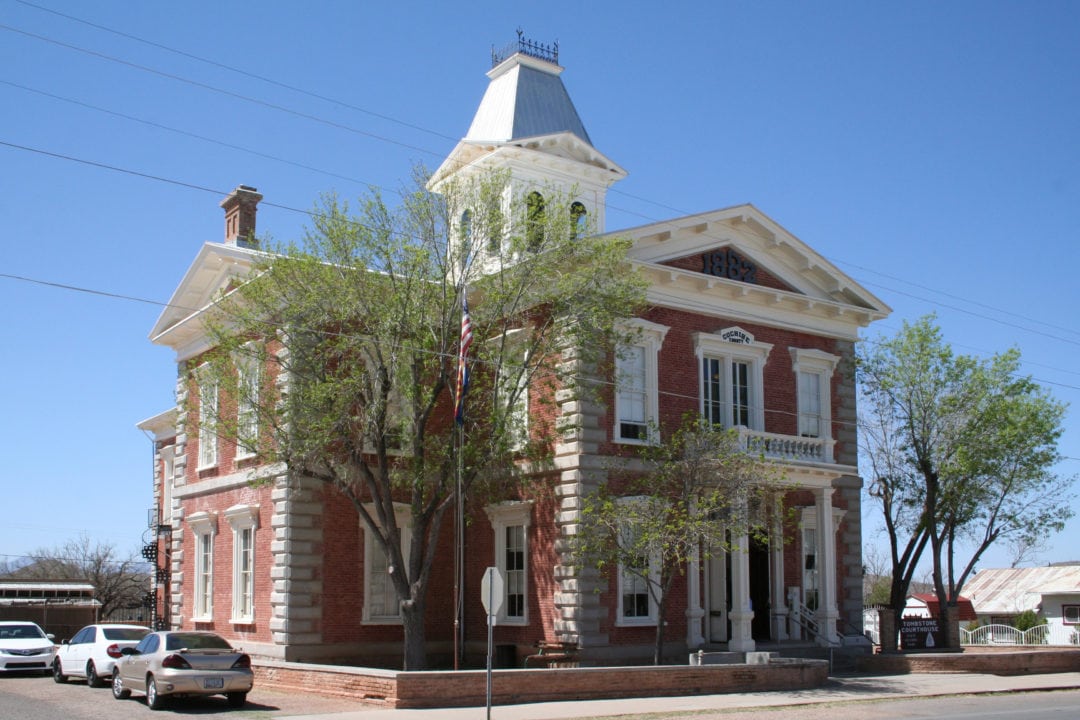
Tombstone Courthouse State Historic Park
Arizona’s first operational state park, Tombstone Courthouse State Park, was dedicated in 1959 and added to the National Register of Historic Places in 1972. Established to preserve the original Cochise County courthouse, the park surrounds the two-story Victorian building, which once housed offices and the county jail. After silver ore was discovered in the late 1800s, Tombstone—site of the gunfight at the O.K. Corral—became a booming mining town known for its lawlessness. This relic of the Old West is now open as a museum with artifacts from the town’s history (don’t miss the gallows outside and a jail photo-op).



